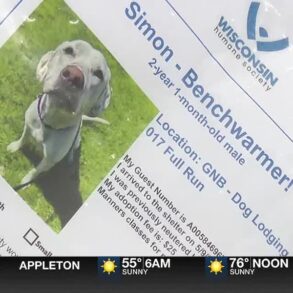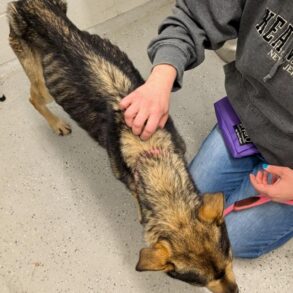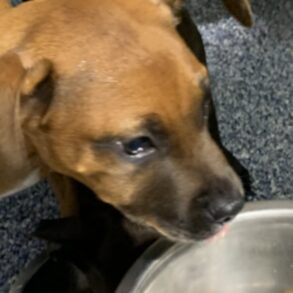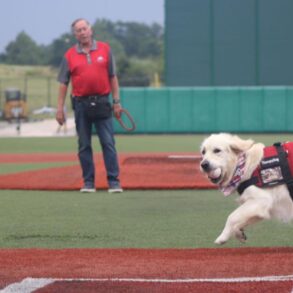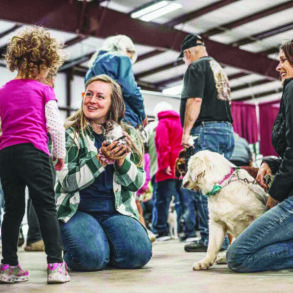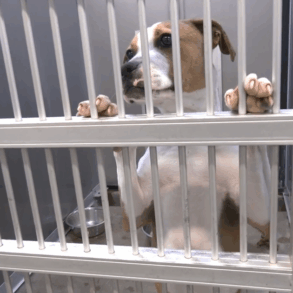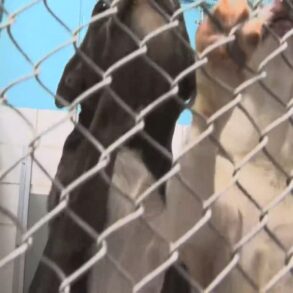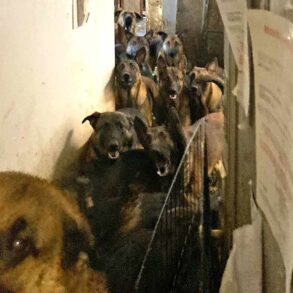
Want to listen to this article for FREE?
Complete the form below to unlock access to ALL audio articles.
Gastric cancer, although rare in dogs, shows many similarities to the disease in humans – including many subtle clinical symptoms, comparable tumor types, late-stage diagnosis and poor prognosis. These parallels make purebred dogs a useful model for studying this disease, which ranks as the fifth most common cancer worldwide.
A recent study published in the Proceedings of the National Academy of Sciences reports the discovery of more than 15 genes associated with gastric cancer by analyzing canine DNA.
Using samples from fewer than 500 dogs, researchers identified over 15 genome regions linked to susceptibility to gastric cancer. This contrasts with human studies that typically require thousands of samples and still detect fewer related genes. This is largely due to the limited genetic diversity within purebred dog breeds, which makes it easier to identify the genetic differences that are related to disease.
The study focused predominantly on two dog breeds that are disproportionately affected by gastric cancer: the Belgian Tervuren and Belgian sheepdog. Over several years, owners, breeders and veterinarians in North America and Europe provided blood or cheek swab samples to researchers at Cornell University, Utrecht University, the University of California Davis, Tufts University and the National Human Genome Research Institute.
Altogether, the team analyzed DNA from 200 dogs diagnosed with gastric cancer and 270 healthy controls. They compared the frequency of key DNA base variations between the two groups. Distinct differences at certain genome sites indicated these regions influence disease risk.
“At the sites that are really important for gastric cancer, what we saw is a distinct DNA difference between healthy and sick dogs, and it tells us that genes in this region contribute to developing the disease,” said senior study author Jacquelyn Evans, PhD, an assistant professor in the Cornell University College of Veterinary Medicine (CVM).
Fifteen genomic regions were identified from this analysis, including known cancer-related genes such as the tumor suppressor PTEN and previously unlinked genes, like PDZRN3. These novel genes present new opportunities for understanding human gastric cancer.
The researchers also compared these findings with data from the closely related Belgian Malinois breed, which rarely develops gastric cancer. This was done by drawing on data provided by Embark, a canine genetic testing company and a research partner of the CVM.
“We wanted to understand what is different about the Malinois, since they’re otherwise so genetically similar, and whether they might carry something that protects them from getting gastric cancer,” Evans said.
The team found three key genome regions common in Malinois dogs that may provide a protective effect. Two of these regions were more frequent in healthy controls.
The study’s authors aim to use these insights to improve outcomes for dogs. Currently, gastric cancer in dogs is usually diagnosed too late for effective treatment. Genetic testing could allow earlier screening of high-risk animals and potentially guide breeding choices to reduce disease frequency. Some of the identified genes might serve as targets for future treatments, which could eventually be tested in human clinical trials.
The research team is continuing to collect more samples to validate the genetic markers and explore their role in different gastric cancer subtypes. They also plan to investigate gene expression changes within tumors to identify potential therapeutic targets.
Reference: Cook SR, Hugen S, Hayward JJ, et al. Genomic analyses identify 15 risk loci and reveal HDAC2 , SOX2-OT, and IGF2BP2 in a naturally occurring canine model of gastric cancer. Proc Natl Acad Sci USA. 2025;122(22):e2416723122. doi: 10.1073/pnas.2416723122
This article has been republished from the following materials. Note: material may have been edited for length and content. For further information, please contact the cited source. Our press release publishing policy can be accessed here.
This content includes text that has been generated with the assistance of AI. Technology Networks’ AI policy can be found here.
This post was originally published on this site be sure to check out more of their content.













